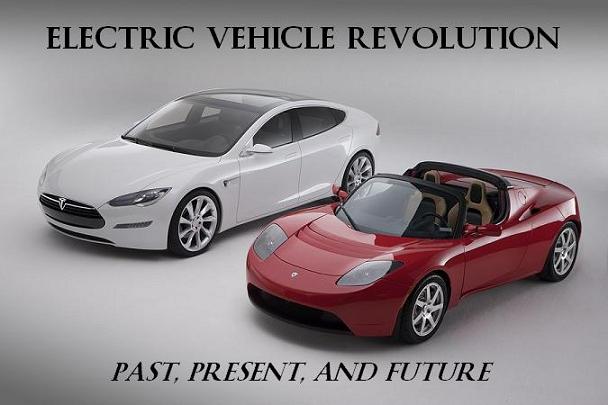I was featured on Jalopnik.com today! Click Here to see the article: I'm Tesla's New Intern, And This Is My Electric Car
Tuesday, May 11, 2010
Jalopnik.com: I'm Tesla's New Intern, And This Is My Electric Car
I was featured on Jalopnik.com today! Click Here to see the article: I'm Tesla's New Intern, And This Is My Electric Car
Friday, May 7, 2010
I was on EVcast!
I was live on EVcast Saturday, May 8th, from 1-2pm (EST). EVcast is a online radio show that discusses electric vehicles and surrounding topics.
If you would like to watch/listen to a podcast of the show here is the link: EVcast #363
Monday, May 3, 2010
WIRED: EV Restoration Leads To Tesla Motors Internship
I was featured today in a WIRED article! Check it out: EV Restoration Leads To Tesla Motors Internship
Saturday, May 1, 2010
Company Spotlight: Tesla Motors
I am going to start this series with my current employer and favorite of the whole group of electric car companies(I may be biased). Tesla Motors has been one of the most influential and successful car companies in recent years. They have been credited with the major reason for General Motors and several other car companies reevaluating electric cars.
They are currently manufacturing and selling the Tesla Roadster, a sporty two seater, that competes with many high class expensive sports cars. I have gotten the privilege to drive one and it was quite an amazing experience. There is something special about pushing the accelerator pedal to the floor and not hearing explosions or smelling any fumes polluting the environment.
Tesla is also designing the Model S which thousands of people around the world can not wait for! The Model S is a seven seat sports sedan that will be able to travel 300 miles per charge and accelerate to sixty mile per hour in under six seconds!
If that is not enough Tesla is selling its electric powertrain technology to other car companies to help electrify their vehicles. Currently, Tesla is working with Daimler.
So Many Companies!
There are so many companies getting involved in electric car development. It is almost like the early nineteen hundreds all over again. There are a large number of car companies starting from good ideas and garage space. It is a testament to all the automobile owners around the world giving these startups hope and financial backing to these start-ups. I hope that all of these companies have great success and help to make electricity the primary source of transportation energy. This post is introduction to the start of a series of posts where I will highlight one electric car company per week. We will see how many I can come up with!
Technology: Flywheel
Today, I was sent a video of the Hybrid Porsche 911 GT3 R. I had not previously thought about using a flywheel as a power storage system in a vehicle. However, I have thought about supercapacitors (Electric double-layer capacitors) and batteries. I have even contemplated the idea of combining these two storage systems much like how many animals have two types of muscle. One for quick acceleration (super capacitors) and one for long distance travel (batteries. This would result in more efficient regeneration (braking) and discharge (acceleration) while also allowing the battery to last longer by not cycling it as much from regeneration. However, I am still waiting for supercapacitors to become more available and proven. Flywheels may take supercapacitors place. I plan to follow this technology closely to see how it develops. Currently, flywheels are similar to most electric vehicle technology in that they are too expensive for wide spread use.
Friday, April 30, 2010
Boston Globe Article: Duxbury student's quirky EV lands him a job at Tesla
Here is a great article that was posted about me recently:
Duxbury student's quirky EV lands him a job at Tesla
Wednesday, March 31, 2010
EV Restoration Sets Teen on New Path; Illustrates Three Decades of Progress
Here is excellent article on my evolution as an EV supporter and electrical engineer!
EV Restoration Sets Teen on New Path; Illustrates Three Decades of Progress
Sunday, January 3, 2010
Solution for EV Range: Aerodynamics

Batteries are steadily improving, and super capacitors (electric double-layer capacitors) are being developed. In the mean time, electric vehicle designers should look to aerodynamics for increasing the range of new electric cars. Companies and inventors alike have been making aerodynamic automobiles since the early 1900s. A few recent models that come to mind are the Toyota Prius, Honda Insight, General Motors EV1, and Aptera 2e. Even home enthusiasts who have modified their current internal combustion vehicles observe drastic improvements in range. A boat tail added to a Geo Metro achieved a fifteen percent increase in range, and a body redesign of a Honda Civic achieved a forty five percent increase. Some designers and companies say that aerodynamic cars will not sell because they are not appealing to the consumer. However, many people who have bought the Prius enjoy its futuristic look and say that this was one of reasons for their selection of the vehicle. Additionally, aerodynamics can be tastefully applied to vehicles. The pictured car for this post is a 1954 Fiat Turbina. It is one of the most aerodynamic cars ever built and has a drag coefficient of 0.14. Think about the production EV’s that are coming to market with ranges of 100-200 miles and imagine what even a fifteen percent increase in range would do to these models.
Subscribe to:
Comments (Atom)




